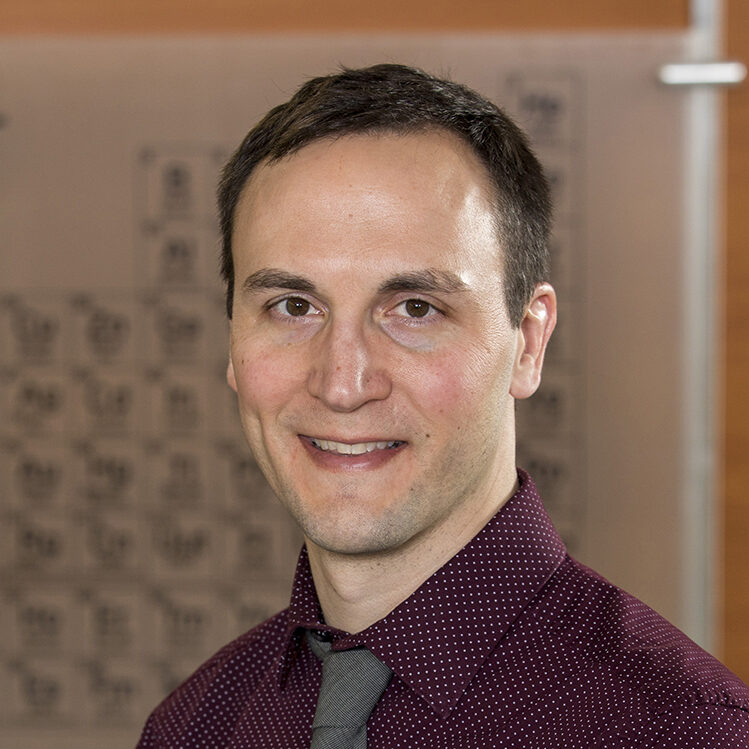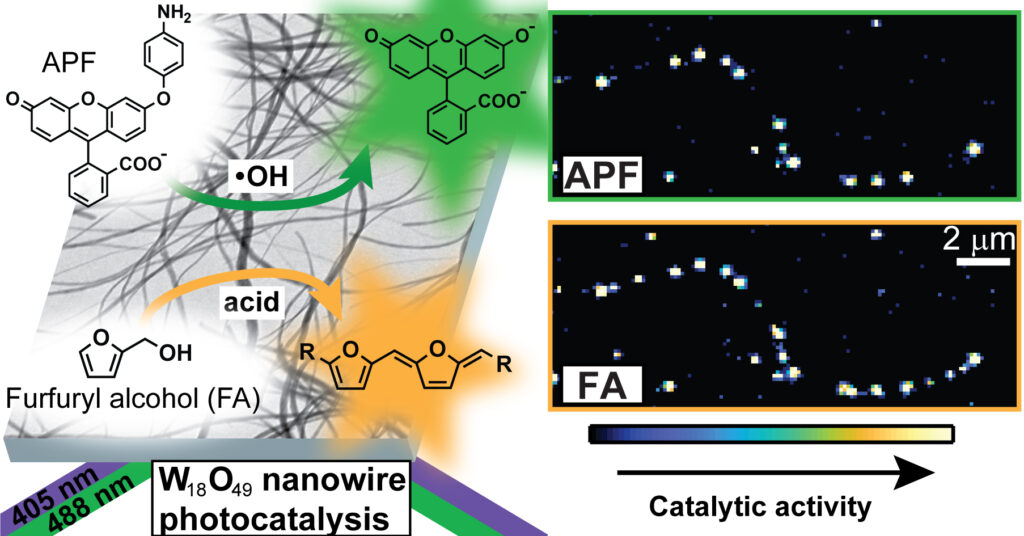Research Focus
Nanoscale catalysts are being developed for a range of important reactions in energy conversion, environmental remediation, and the production of commodity chemicals. The Sadtler lab studies colloidal semiconductor nanocrystals that absorb sunlight to drive useful chemical reactions through photocatalysis. Single-atom photocatalysts are a relatively new type of photocatalyst consisting of individually dispersed metal atoms on a semiconductor support. Single-atom photocatalysts have potential advantages over other types of photocatalysts, including increased efficiency and stability compared with nanoparticles for generating fuel from sunlight. However, it is currently very challenging to monitor how the structures of single-atom photocatalysts change over time and whether those changes increase or decrease their efficiency. Single-molecule fluorescence microscopy is an advanced imaging technique that can overcome these challenges by monitoring the catalytic activity of individual photocatalyst particles. Dr. Sadtler and his students are using single-molecule fluorescence microscopy to image individual catalytic reactions on the surface of single-atom photocatalysts; this technique will enable them to visualize whether the structure of these catalysts change over time. By identifying whether individual metal atoms or small clusters of atoms are more catalytically active, this project aims to understand and design more efficient and stable single-atom photocatalysts that produce chemical fuels in a carbon-neutral manner.
Summer undergraduate students will learn how to synthesize single-atom photocatalysts and alter conditions during chemical reactions to control their structure. Students will develop structure/activity relationships in which they correlate structure of the single-atom photocatalysts with their activity for photocatalytic water splitting to generate hydrogen fuel.
Skills, Techniques, Methods
- Design and perform experiments in a chemical wet lab
- Synthesize nanoscale catalysts using chemical methods and characterize their structure and morphology
- Test the efficiency of the semiconductor nanocrystals for photocatalytic reactions in an optics lab
- Analyze and interpret data collected during experiments
- Communicate research results from the summer project in written and oral presentations
Research Conditions
Students will conduct experimental research in a both a chemical wet lab as well as an optics lab. They will spend time in a student office reading journal articles relevant to their project, analyzing data, as well as discussing their data with other members of the lab. They can also accompany their graduate mentor to observe advanced characterization of the materials they make at the Institute for Materials Science & Engineering and the Chemical and Environmental Analysis Facility at WashU. Approximately 45% of their time will be spent in the lab, 40% in the office (reading and analyzing data), and 15% at other facilities on campus.
Team Structure and Opportunities
Our lab is composed of doctoral students and undergraduate students. Summer students will work closely with a doctoral student in the lab during their daily research activities. Summer students will meet weekly with Dr. Bryce Sadtler to discuss the progress of their project and attend a weekly research group meeting with the other members of the lab. The student will present their findings in a group meeting near the end of the summer.
Requirements
Completion of one semester of general chemistry (Chem 111A or 105A)

